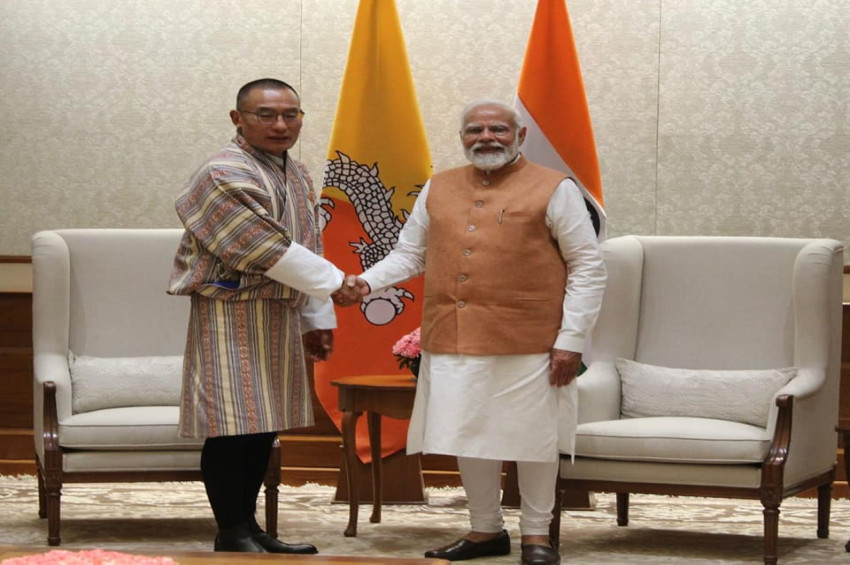Calls to Action
In 1986, His Majesty the Fourth Druk Gyalpo issued a Royal Kasho to the Royal Civil Service Commission that was ahead of the times. The decree instructed a review of incentives for civil servants and a promotion system based on their capability and results of their work -- effectively introducing what is now known as Results-Based Management practice -- to reform and advance Bhutan’s public sector.
Now, 35 years later, another far-sighted Royal Kasho on Civil Service Reform has renewed the focus on our governance structure and public service delivery. It calls for a fundamental “restructuring of the civil service, so that it has a renewed vision for the 21st century”. The COVID-19 pandemic has put into sharp debate the central challenge that has long been plaguing the Bhutanese public sector. Is our system able to adjust to new realities capable of focusing on outcomes our society needs and wants, and at providing efficient services while navigating seismic shifts?
His Majesty has time and again articulated the vision -- the critical foresight -- for anticipatory governance so that Bhutan will be able to deal with future challenges in a proactive, effective, and sustainable manner. The next step is for us to analyse what needs to be reformed, what the future of government could look like, and what will be needed to be better prepared for that future.
The Need for Reform
In an age of fast-changing and constantly evolving demands, volatility, and complex problems, public systems need to adapt quickly to successfully manage efficient service delivery. Like many governments across the world the Bhutanese public service faces challenges related to turf protection, pace of change, technological change, ad hoc approaches and short-termism, implementation gap, and overall risk avoidance.
1. Risk-averse
By and large, the Bhutanese civil service culture is one based on riskaverse, rule-driven, and predictable decision-making. Uncertain or difficult decisions are avoided and justified for political and reputational reasons, thus creating a tendency for reactive and bureaucratic responses, instead of proactive and innovative action. Needless bureaucracy stifles creativity and there is little incentive to take risks. There are no rewards for taking a gamble which works but plenty of downsides for failure.
2. Turfism and Silos
Rather than approaching issues holistically through a systems-thinking approach, the public sector is still constrained by a traditional logic that revolves around singular and linear decision-making reinforced through sector specialisation. Although policy design undergoes a more comprehensive screening assessment through the Gross National Happiness Commission (GNHC), implementation is still conducted in silos by government agencies without strong monitoring and evaluation frame works.
3. Technological Change
A pacing problem -- in which the speed of innovation, especially in the digital landscape, outpaces the government’s understanding of its impact results in a regulatory-focused approach, instead of an innovativefocused approach. Given Bhutan’s fast pace of development, it has resulted in an increasingly supervisory public structure that curtails innovation, both within and outside the system, and a failure to seize on many new technological opportunities.
4. Ad hoc and Short-Termism
Political pressure often pushes short-termism and ad hoc approaches, forcing civil servants to be driven by events rather than forward-looking practices. This pressure to seek out quick wins for political imperatives reduces the public sector’s capacity to tackle long-term issues.
5. Implementation Gap
Implementation is where good policies go to die. The implementation gap is often a result of focusing too much on organisational structures and processes, and not enough on attitudes and mindsets of civil servants. The hierarchical nature of our civil service creates a one-way directive communication, instead of a participatory and iterative dialogue that creates space for genuine interaction.
By Rabsel Dorji, The Druk Journal
In 1986, His Majesty the Fourth Druk Gyalpo issued a Royal Kasho to the Royal Civil Service Commission that was ahead of the times. The decree instructed a review of incentives for civil servants and a promotion system based on their capability and results of their work -- effectively introducing what is now known as Results-Based Management practice -- to reform and advance Bhutan’s public sector.
Now, 35 years later, another far-sighted Royal Kasho on Civil Service Reform has renewed the focus on our governance structure and public service delivery. It calls for a fundamental “restructuring of the civil service, so that it has a renewed vision for the 21st century”. The COVID-19 pandemic has put into sharp debate the central challenge that has long been plaguing the Bhutanese public sector. Is our system able to adjust to new realities capable of focusing on outcomes our society needs and wants, and at providing efficient services while navigating seismic shifts?
His Majesty has time and again articulated the vision -- the critical foresight -- for anticipatory governance so that Bhutan will be able to deal with future challenges in a proactive, effective, and sustainable manner. The next step is for us to analyse what needs to be reformed, what the future of government could look like, and what will be needed to be better prepared for that future.
The Need for Reform
In an age of fast-changing and constantly evolving demands, volatility, and complex problems, public systems need to adapt quickly to successfully manage efficient service delivery. Like many governments across the world the Bhutanese public service faces challenges related to turf protection, pace of change, technological change, ad hoc approaches and short-termism, implementation gap, and overall risk avoidance.
1. Risk-averse
By and large, the Bhutanese civil service culture is one based on riskaverse, rule-driven, and predictable decision-making. Uncertain or difficult decisions are avoided and justified for political and reputational reasons, thus creating a tendency for reactive and bureaucratic responses, instead of proactive and innovative action. Needless bureaucracy stifles creativity and there is little incentive to take risks. There are no rewards for taking a gamble which works but plenty of downsides for failure.
2. Turfism and Silos
Rather than approaching issues holistically through a systems-thinking approach, the public sector is still constrained by a traditional logic that revolves around singular and linear decision-making reinforced through sector specialisation. Although policy design undergoes a more comprehensive screening assessment through the Gross National Happiness Commission (GNHC), implementation is still conducted in silos by government agencies without strong monitoring and evaluation frame works.
3. Technological Change
A pacing problem -- in which the speed of innovation, especially in the digital landscape, outpaces the government’s understanding of its impact results in a regulatory-focused approach, instead of an innovativefocused approach. Given Bhutan’s fast pace of development, it has resulted in an increasingly supervisory public structure that curtails innovation, both within and outside the system, and a failure to seize on many new technological opportunities.
4. Ad hoc and Short-Termism
Political pressure often pushes short-termism and ad hoc approaches, forcing civil servants to be driven by events rather than forward-looking practices. This pressure to seek out quick wins for political imperatives reduces the public sector’s capacity to tackle long-term issues.
5. Implementation Gap
Implementation is where good policies go to die. The implementation gap is often a result of focusing too much on organisational structures and processes, and not enough on attitudes and mindsets of civil servants. The hierarchical nature of our civil service creates a one-way directive communication, instead of a participatory and iterative dialogue that creates space for genuine interaction.
By Rabsel Dorji, The Druk Journal









